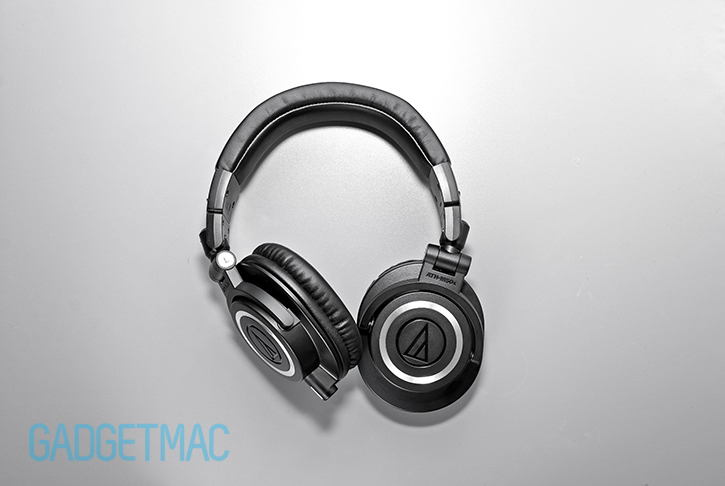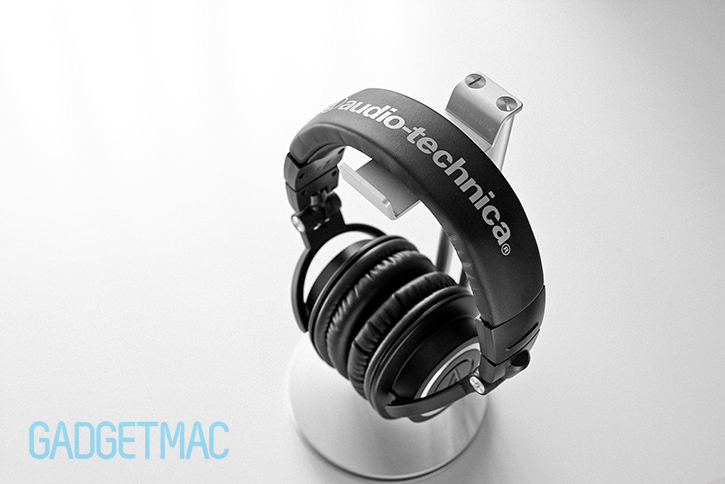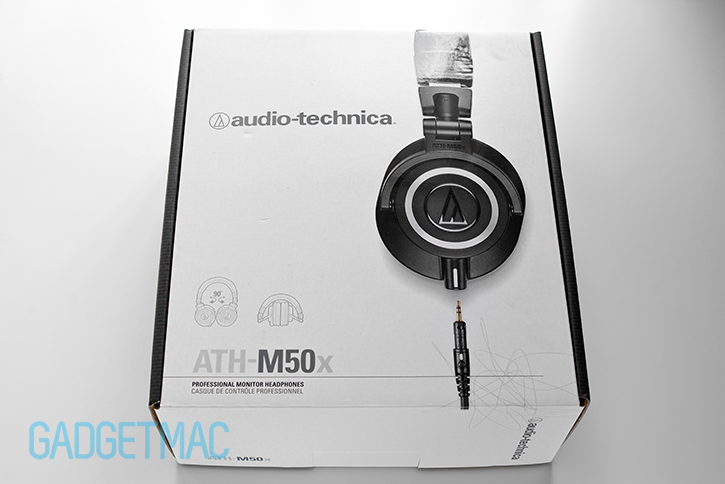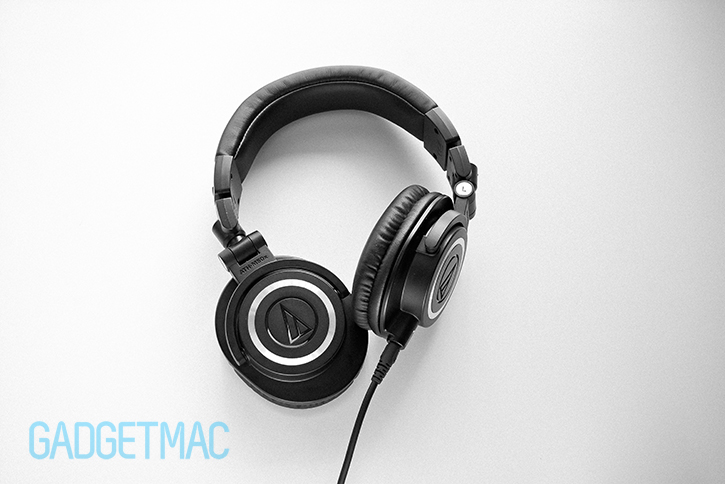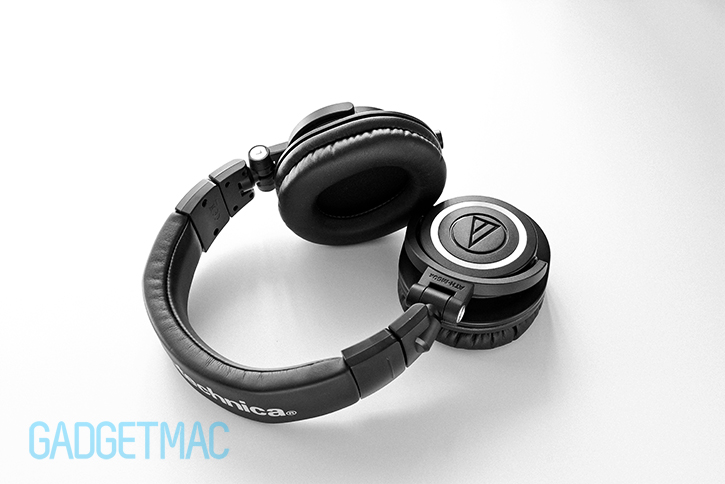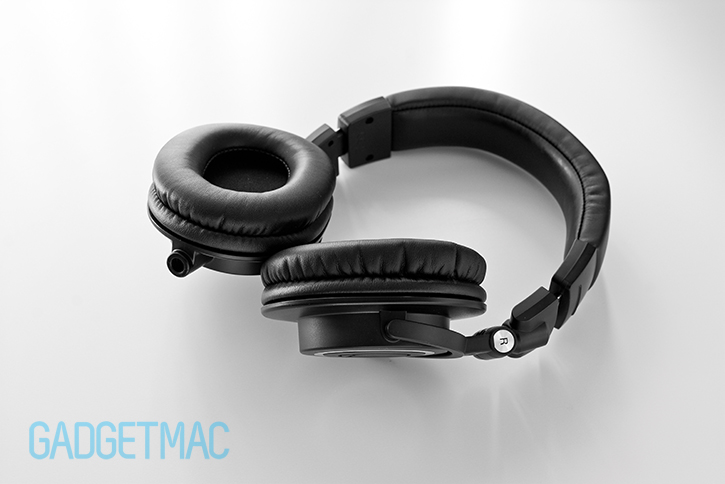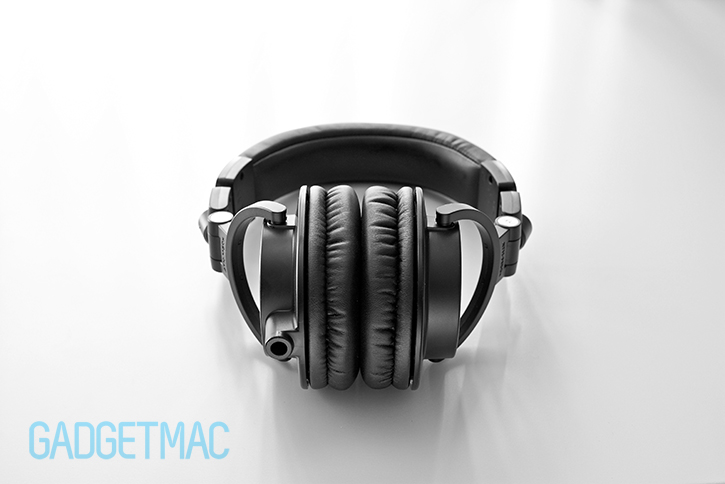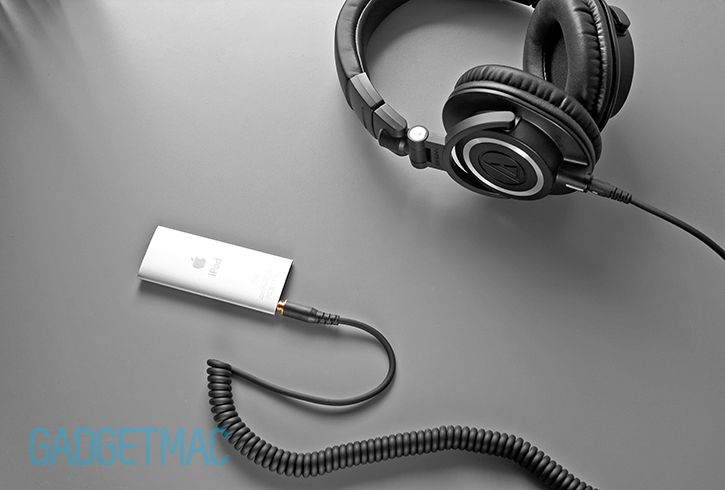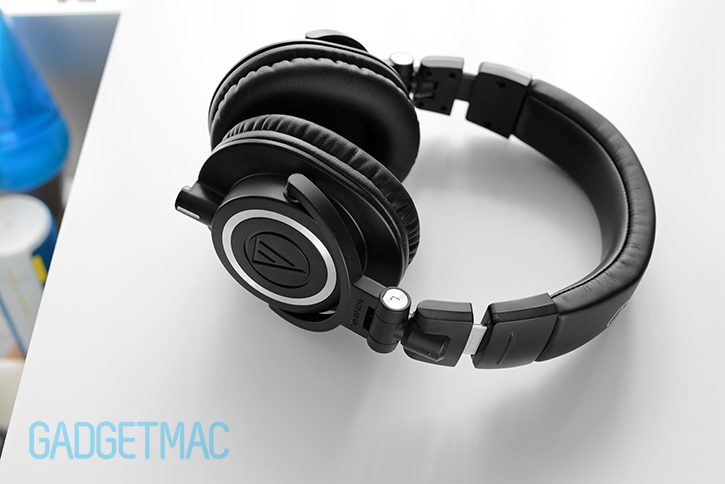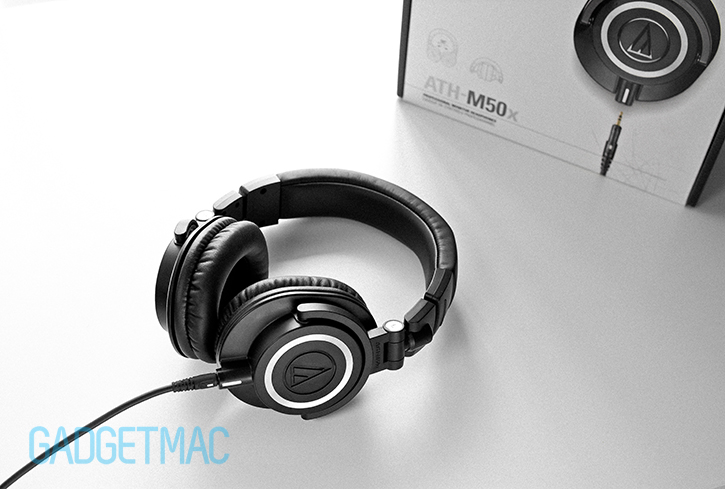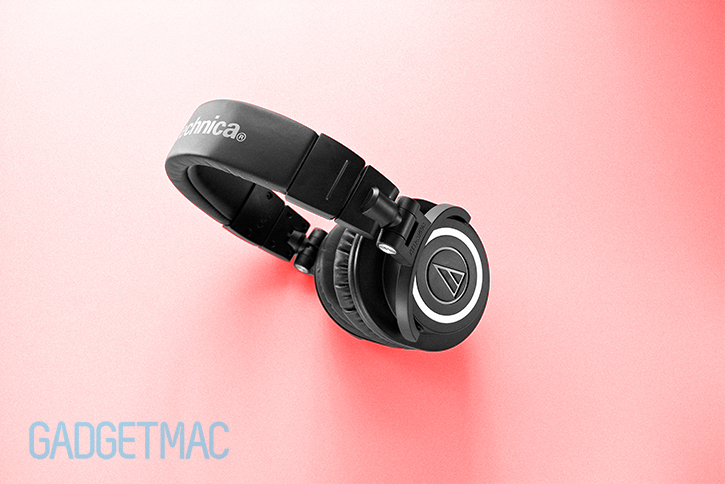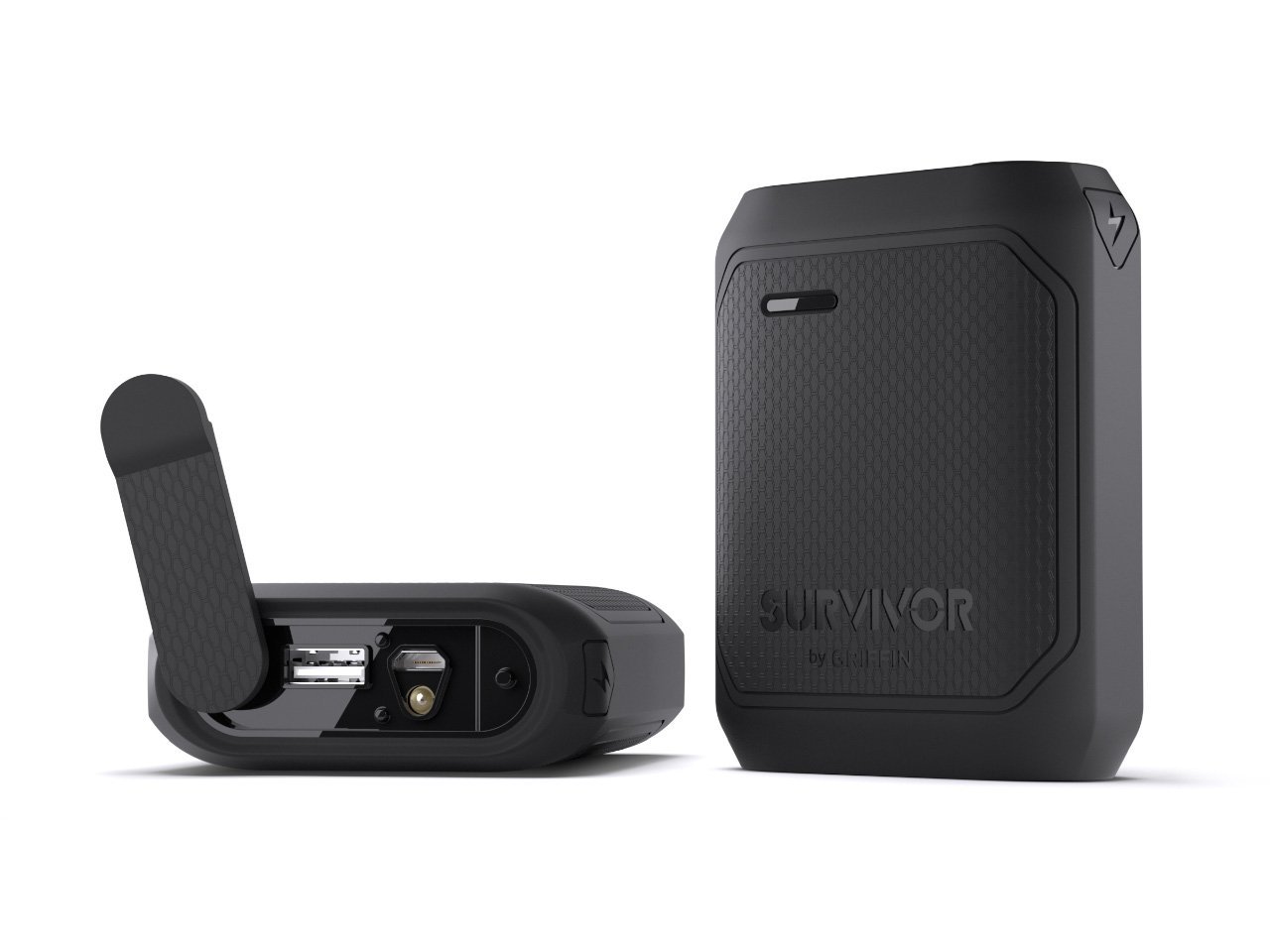Audio-Technica ATH-M50x Headphones Review
/Great news! Audio-Technica has recently introduced its revamped line of studio-grade and very much professional over-ear headphones. One of them being a new mid-level flagship successor to one of the more well known and admired headphones in recent years - the ATH-M50. Believe it or not, we had never gotten around reviewing anything from Audio-Technica. But that's all about to change because we have spent countless hours with the comany’s latest and greatest flagship headphones - the ATH-M50x. The most anticipated successor to the highly praised M50 has received a subtle makeover. The question is will they be a worthy successor. Our in-depth review awaits you after the jump!
Well, not a whole lot has changed. Audio Technica used a very delicate touch in designing the M50x when it felt the time was right to release an improved version to their best selling headphones. Audio-Technica went with a "if it isn't broken, don't fix it" approach with the M50x. While most other companies will almost always try and up the ante with bigger and better things, Audio-Technica hit its strive with the M50 only to focus on what users were requesting as an added feature for the next iteration. The company has listened it seems because the most demanded request was for a detachable cable functionality.
Want to know how the M50x fare against the M50? Well in terms of sound performance and overall interior and exterior design...they're identical. The detachable audio cable is the single biggest difference between the M50x and its predecessor. The somewhat small gold-plated plug connects only to the left ear cup and features a twist-to-lock design which secures the connection firmly in position similar to an interchangeable lens camera. Also, the M50x come in the standard white and black flavors as well as in limited edition navy blue with brown trim - which is an exclusive new color to the M50x model.
More importantly, what makes Audio-Technica's new M50x headphones an attractive proposition is the fact that they're reasonably priced at $169. That is a price range where headphones at this calibre are hard to come by. And while you can technically still find the older M50s as of today for less than $130, they have come down in price over the years prior to their original $200 price tag. A few other notable mentions are the Sennheiser HD 598, Beyerdynamic DT 770 Pro and Shure SRH840 over-ear headphones. Though I'd still tell you to go for the M50x instead of the latter. Not only have they got larger drivers, but they've got superior and lighter build quality. Speaking of larger drivers, Audio-Technica's new M40x over-ear headphones have smaller 40mm drivers compared to the M50x, but are designed similarly in that they also feature detachable audio cables and the same flexible form factor.
Up until the release of the M50x, the only choice you had when picking up a pair of Audio-Technica's higher-end headphones as far as cable preference was either a fixed straight cable (ATH-M50s), or a fixed coiled cable (ATH-M50). Not only do the M50x now include both a straight and a coiled detachable cable, but Audio-Technica has also made sure to address the convenience of portability with the inclusion of a third detachable cable which is best suited for use with portable devices like your smartphone thanks to its relatively short 1.2m length and slim 3.5mm plug. Alas, none of the cables included offer an in-line remote control for adjusting the volume, skipping tracks or headset functionality; which is a bit disappointing given the fact that a short cable was indeed included with portable devices in mind. On the upside, the cables while thick and fantastically robust, offer enough flexibility so that they don't feel restricting and stiff. Your cat will find that chewing on these cables will be quite challenging.
The included soft smooth faux leather pouch doesn't offer much protection, but it's nice to know that it's there when you do need to put your headphones into a backpack for travel. While every cable features a 3.5mm audio source plug, the two lengthy cables have a screwable adapter connector which fits the included gold-plated 6.3mm (1/4") adapter plug.
Detachable cables? Check. Unfortunately however, without any button controls or mic support. That aside, the second most notable feature about the M50x is that they're about as flexible as a yoga instructor. Which is a good thing of course. What it actually means is that the ear cups and joints allow the M50x to fold into a smaller form factor for storage and easier travel. The cups can rotate to fold flat or fold into and under the headband like someone who's gone into the fetal position. Not that collapsible headphones is a thing of magic, but it is a plus nonetheless. Again, a simple volume controller near your face would be more convenient.
I also love the attention to detail which is pretty basic but still very functional and helpful. There are legible Left and Right indicators directly in front of you instead of hiding somewhere inside the headband which makes using the headphones so much more pleasing. It may be a small little detail but you'd be surprised to know that I always check whether or not I've got the correct orientation before wearing the headphones. It's a crucial feature.
As for built quality, the M50x are identical to their predecessors which are known for their use of high quality textured matte plastic construction and overall solid durability. The M50x are surprisingly lightweight and agile in their foldable form factor. The extreme rotatability and flexibility of the ear cups is just incredibly awesome. They're not luxurious or premium by any means, however, they don't feel cheap. By comparison, the M50x seems to have a more durable plastic build quality over the UE 6000, but it still isn't as impressive compared to metal-made headphones such as the Beoplay H6 or the JBL Synchros S700.
They're not the type of headphones that try to appeal to consumers with lush build quality and materials. The durability, comfort and obviously sound quality is what actually matters for Audio Technica and it is being clearly shown here. The M50x are not going to amaze you externally like a pair of Beats or Bowers & Wilkins would, however, you most likely won't be disappointed with how they're put together. And I've gotta say that as far as "studio" headphones go, the M50x are arguably the most appealing ones out there.
As soon as you put them on you know right there and then that you'll have an enjoyable listening experience. The cups literally kidnap your ears and place them inside an air-tight enclosure that feels plush and tidy. There is no pressure being placed against your ears because the M50x have a large over-ear ear cup design with a roomy interior that basically wraps around your ears with only the amply padded cushions sitting tightly up against your head. I wore the M50x on my head for hours...hours! Without any discomfort except for an acceptably warm sensation after a long period of time. These are easily one of the most comfortable headphones I've used. And more impressively, ones that can be worn hours on end. The ear cup joints have a 3-axis articulating and pivoting function that let the ear cups have a wide range of movement and the flexibility of adjusting all by themselves to your ears and head shape as you'd expect.
The exterior passive noise isolation isn’t the greatest, but once you put them on you still are able to feel like you’ve stepped into a sound booth just because of how well the soft padding and ear cup design envelops your ears. It's worth noting that there's very little to now audio bleed when wearing the M50x. That means that people around you will not hear your music at a moderate volume.
Not a whole lot of finesse went into making the M50x' headband or any other part for that matter, and still it does its intended job excellently. Extra thick padded headbands is never a bad thing, and this one in particular is well rounded and is very comfortable sitting right across your head. Of course the white Audio-Technica logo could be a bit bigger, but I'm not complaining.
The clamping force if the headband at first seems strong, but thanks to the large ear cups you still get a prolonged pleasurable comfort and wearability.
Although we haven't had the necessary amount of time to "burn-in" the drivers in fully straight out of the box, it isn't surprising to still be amazed by how great the M50x sound naturally. The dynamic sound performance coming out of the 45mm drivers with copper-coated aluminum voice coils is stupendously clear, clean and most of all, accurately balanced and rich throughout the frequency spectrum making them an ideal headphones for listening to all types of genres. It actually almost sounds as if nothing is missing when purely looking at the M50x as studio monitoring headphones. What stands out is the M50x’ ability to separate bright sounding vocals and instrumentals into almost what could be described as layers - which creates a large sense of scale that’s obviously the exact opposite of cluttered and muddy-sounding audio. I was also surprised to pick up tiny little imperfections and details in previously listened-to tracks that I have never knew were there when listened to using other headphones and even speakers for that matter. It's astounding how well the M50x can deliver audio with such clarity and depth across the midrange and freshly cut highs.
But if you’re looking to bite into juicy, bass throbbing headphones you’d probably be disappointed with the M50x. They’re balanced, which means that aren’t biased towards one or two specific frequencies like the H6, which have a huge emphasis on highs and very little focus on lows. The bass on the M50x is well behaved and mindful of its fellow mids and highs. No ones is looking to get more attention than the other. You could say the sound signature of the M50x is harmoniously united and peaceful. Of course the same would be said regarding the M50.
The M50x are the exact opposite of underpowered cans and can easily be driven by literally any audio device. They're so sensitive that you may find your listening volume to be set much lower than you'd normally expect. They're even more easier to drive than the battery powered Logitech UE 6000 headphones. The M50x are powerfully responsive to volume and that’s a great thing because it means that the drivers are capable of presenting their highest potential straight out of the box and without any amping. Although amping wouldn’t hurt to amplify the M50x’ soundstage. When listening to Sail by Awolnation I could hear such an amazing depth of stereo sound that sound so definitively comprehensible that I’ve never been able to hear using other headphones - or at least as far as I can remember.
But they’re not as perfect as they could have been. For example, their soundstage doesn’t expand over the horizon (albeit it’s much wider than other headphones at this price including the UE 6000) and the mid-level bass response could have used more of a lift towards sounding somewhat more impactful. That said, if connected to the right headphone amp I’m sure that will improve. I guess what I'm trying to say is that the sound signature is uncolored. It is flat and natural which is perfectly fine if you're going to use them as monitoring headphones, but for everything else you may want to play around with your EQ settings. In fact, an equalizer setting can introduce the desired result. And in fact a quick equalizer tuning using iTunes has significantly improved the bass response of the M50x that better fit to my music listening liking.
The M50x are much better at delivering a balanced sound with clearer, more forward sounding highs and mids compared to the UE 6000. However, they don't blow them away as far as raw audio quality is concerned. Both headphones have a pleasing sound quality. The difference is a matter of bias lows on the UE 6000 which tend to be slightly overpowering when comparing the M50x and the UE 6000 head to head. Ultimately, the M50x are unrivaled when it comes to instrument separation and vocal clarity presentation. They've got more detail midrange and a spacious soundstage that's very favorable when you've got balanced sound signature.
Now when we compare the M50x against the JBL Synchros S700 - which are far less comfortable to wear, we find that they've got a similar spacious rich sound that's fairly balanced with a bit more low-bass oomph. But it wouldn't be very fair to compare these two due to the price difference. But we will say the S700 sound less bright, although they are as good sounding as the M50x only with a more emphasized bass response. I suspect the S700's larger 50mm drivers put them at an advantage over the UE 6000 and right at the same level of the M50x in terms of smooth, clearer audio quality performance.
With all that being said, the M50x are in no way light on bass. It's understandable to feel skeptical about the audio performance of headphones that cost around $150. In many cases it's a matter of hit or miss. But as many of you may very well know, Audio Technica's M50x predecessors weren't anywhere close to being subpar when it came to delivering unadulterated audio quality. The same will be said about the M50x. However, if you like bassier headphones you should pick up the UE 6000, no questions asked. They're less balanced, not as clear but will satisfy with deeper lows and active noise-cancellation. They'll do more justice to bassy-reliant tracks and genres extremely well, albeit we think the M50x bring more value to the able with their accurate balanced sound quality and phenomenal clarity. And if you feel like stepping up your audio game, the S700 are one more notable pair of over-ear headphones and will not disappoint with their powerful sound and rock solid premium aluminum build quality. Though they are arguably less comfortable to wear over a long period of time. And if you think you can afford an even better pair of over-ear headphones, you may want to consider the widely acclaimed Sennheiser Momentum.
On that note, we came away utterly impressed by Audio Technica's newest pair of over-ear headphones. There’s just nothing bad that I can say about the M50x. They’re brilliant. Any respective audiophile would agree that for the price, these would be very hard to one up. Anyone that is looking to grab a pair of awesome sounding and performing headphones should consider Audio Technica’s new ATH-M50x. Suffice it to say that I’m truly impressed by the M50x. And to say that they aren’t being added to my favorite list of headphones would be laughable and borderline insane.
The ATH-M50x are easily one of our new favorite pair of headphones. How can we not give them our Editors' Choice Award when you consider that they're priced at under the $200 mark, have truly a balanced and blissful sound performance, durable build quality, marvelous over-ear closed-back ear cup design that's ridiculously comfortable to wear for sarcastically ever, and a favorable set of included detachable cable selection. If you're an audiophile on a tight budget or someone who is in need of studio-class cans, the M50x are a must buy. But you probably already know that. You could either pick up the newly improved (feature/design refinement wise) M50x, or go for the original M50 model which are just as good sounding as the M50x, albeit cost a few dollars less. Unless removable cables are a preference of yours, we see no reason why anyone should upgrade from their M50.







